How Popular Client Communication Tools Stack Up in 2025
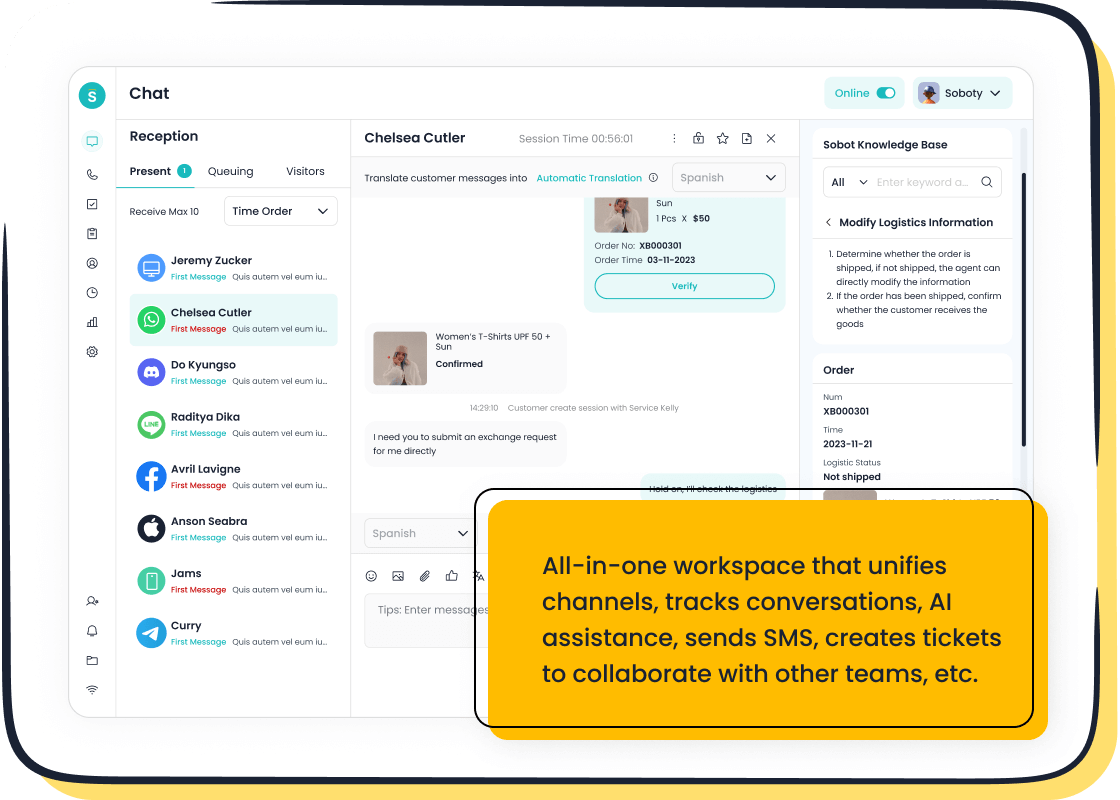
In 2025, client communication software has become essential for businesses striving to enhance customer experience. Tools that unify communication channels help you engage clients effectively. The market for these solutions is growing rapidly, with projections showing an increase from $1.31 billion in 2024 to $1.45 billion in 2025. It’s crucial to select software that balances advanced features, usability, and cost. The right tool can improve efficiency, streamline workflows, and boost customer satisfaction. Sobot’s innovative solutions exemplify how businesses can achieve these goals.
Key Features of Client Communication Software in 2025
Omnichannel Communication for Seamless Customer Support
Omnichannel communication has become a cornerstone of customer communications software in 2025. It ensures that your customers can interact with your business across multiple platforms, including email, social media, live chat, and phone, without losing context. This seamless experience enhances customer satisfaction by providing consistent and personalized messaging across all channels.
Businesses leveraging omnichannel communication benefit from unified customer interaction data. This approach allows you to gain a holistic view of customer behavior, enabling better customer communication management software strategies. For example, omnichannel reporting ensures consistency across platforms, which improves customer engagement and loyalty. Additionally, support teams can consolidate their tools, leading to greater efficiency and reduced operational costs.
Tip: Implementing omnichannel routing can further optimize your customer service by directing inquiries to the most suitable agent or department. This ensures faster resolution times and higher customer satisfaction.
AI-Powered Automation and Chatbots
AI-powered communication software has revolutionized how businesses handle customer interactions. Automation and chatbots now play a pivotal role in streamlining communication processes. These tools can handle repetitive queries, freeing up your team to focus on more complex issues. They also provide instant responses, reducing first response times by 37% and speeding up ticket resolution by 52%.
The integration of AI into customer communications software has proven to be highly effective. A recent study revealed that 79% of customer service specialists value AI for its ability to enhance productivity, while 91% of businesses view AI as a positive force for consumer engagement. Chatbots, in particular, offer 24/7 availability, ensuring that your customers receive support whenever they need it.
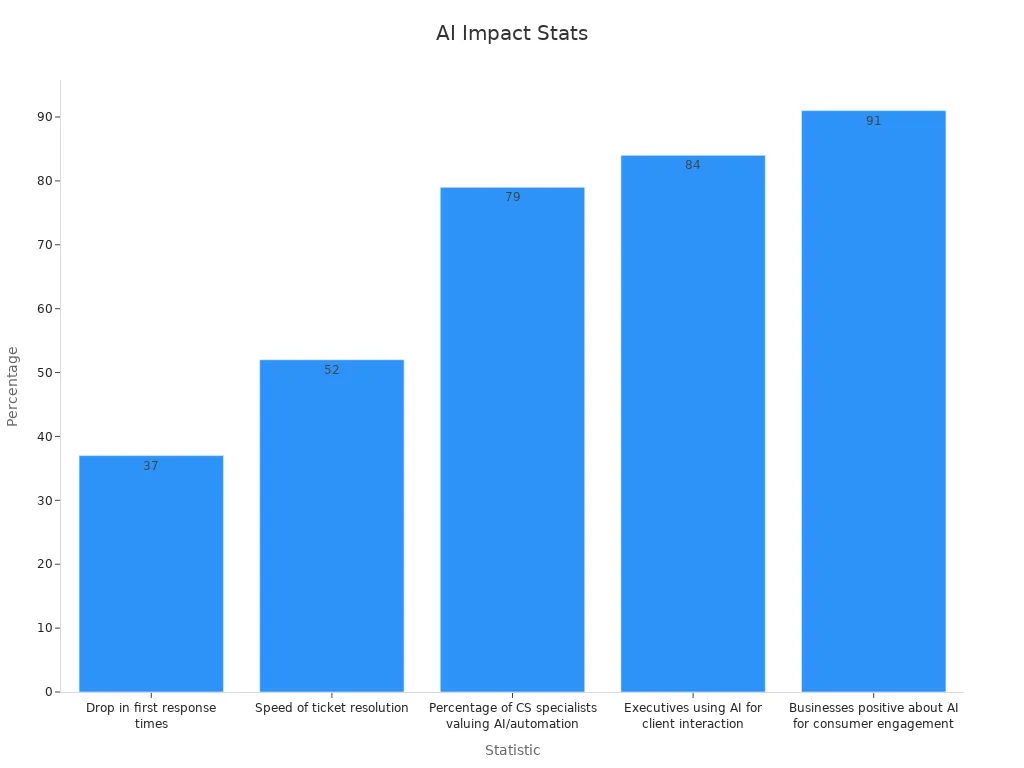
By incorporating live chat and chatbots into your customer communication management software, you can provide a more efficient and satisfying experience for your customers. These tools not only improve response times but also gather valuable customer feedback, which can be used to refine your services.
Integration with Business Tools and CRMs
Easy integration with business tools and CRMs has become a critical feature of customer communications software. This capability allows you to unify customer data across platforms, providing a comprehensive view of each client's history. Such integration eliminates data silos, ensuring that all departments work from a single source of truth. This reduces errors and enhances collaboration among teams.
The benefits of integration extend beyond data management. Omnichannel customer service, enabled by integrated systems, leads to faster resolution times and improved customer satisfaction. For instance, syncing client data between your CRM and customer communication management software allows your team to access insights that drive better decision-making. Additionally, automation features within integrated systems improve operational efficiency by reducing manual tasks.
| Integration Benefit | Description |
|---|---|
| Omnichannel Customer Service | Provides a holistic view of customers, leading to faster resolution times. |
| Elimination of Data Silos | Ensures all departments work from a unified data source for quicker decisions. |
| Reduced Risk of Errors | Maintains data accuracy by minimizing discrepancies. |
| Enhanced Collaboration | Allows teams to share data seamlessly for better teamwork. |
| Improved Operational Efficiency | Automates processes, reducing manual effort and errors. |
| Scalability | Supports business growth without significant friction. |
| Data Integrity | Ensures consistent and clean data across platforms. |
By integrating your customer communications software with other business tools, you can create a more streamlined and efficient workflow. This not only improves customer satisfaction but also positions your business for long-term success.
Scalability for Growing Businesses
Scalability is a critical feature for businesses aiming to grow without operational disruptions. As your company expands, your client communication software must adapt seamlessly to increasing demands. Tools designed with scalability in mind ensure smooth transitions, whether you're onboarding new team members or handling higher customer volumes.
Modern communication platforms offer several advantages that cater to scalability:
- Easy scalability allows you to adjust resources based on your business needs.
- Cost-effective solutions ensure growth without excessive expenses.
- Remote access capabilities empower your team to work efficiently from anywhere.
- VoIP systems simplify adjustments, offering features like call forwarding and voicemail-to-email.
These features enable businesses to scale operations while maintaining high-quality customer service. For example, integrating VoIP systems into your communication software ensures flexibility during peak seasons or rapid expansions. By leveraging scalable tools, you can focus on growth without worrying about technical limitations.
Security and Compliance in Customer Communications Software
Security and compliance are non-negotiable in client communication tools. With cybercrime costs projected to reach $10.5 trillion by 2025, safeguarding customer data has become a top priority. Modern software incorporates robust security features to protect sensitive information and ensure compliance with regulations like GDPR and CCPA.
Key statistics highlight the importance of security measures:
| Statistic | Value |
|---|---|
| Projected global cost of cybercrime by 2025 | $10.5 trillion |
| Average cost of a data breach in 2024 | $4.88 million |
| Percentage of breaches involving customer personal identifiable information | 46% |
| Average time to identify a data breach | 204 days |
| Average time to contain a data breach | 73 days |
| Breach notification costs in 2023 | $370k |
| Increase in cyberattacks using stolen credentials | 71% year-over-year |
| Percentage of breaches involving the human element | 74% |
| Percentage of employees taking sensitive IP when leaving | 12% |
| Percentage of organizations with a third-party vendor breach | 98% |
| Percentage of organizations using security AI and automation | 61% |
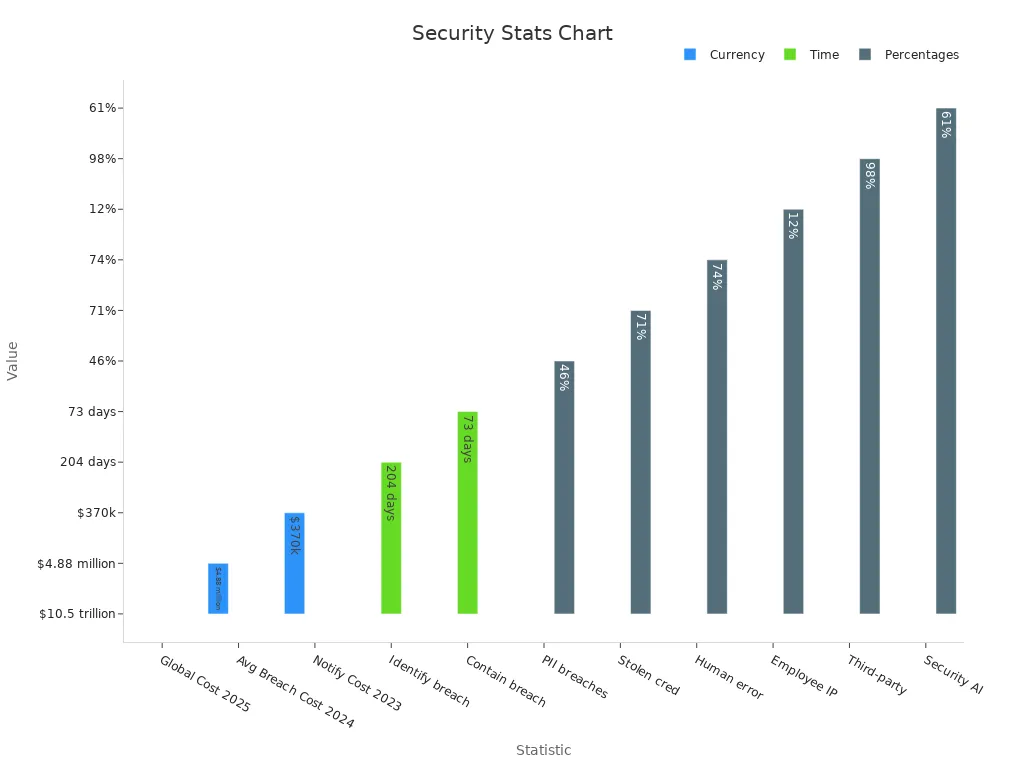
To ensure compliance, many tools integrate security AI and automation. These systems detect and respond to threats faster, reducing the average time to identify and contain breaches. Additionally, encryption and multi-factor authentication protect customer data from unauthorized access. By choosing software with advanced security features, you can build trust with your clients and safeguard your business from costly breaches.
Comparing Popular Client Communication Software
Zendesk: A Leader in Customer Support
Zendesk has earned its reputation as one of the best customer communication management software solutions in the market. Its focus on delivering exceptional customer support has made it a preferred choice for businesses worldwide. You can rely on Zendesk to streamline customer interactions through its robust ticketing system and real-time support capabilities.
Key statistics highlight the importance of customer experience in Zendesk’s success:
- 75% of consumers are willing to spend more with businesses that deliver a good customer experience.
- 73% of consumers will switch to a competitor after multiple bad experiences.
- Over 50% will switch after just one bad experience.
Zendesk’s platform offers features like automated workflows, omnichannel communication, and detailed analytics. These tools help you manage customer interactions efficiently while improving response times. Businesses using Zendesk often report higher customer satisfaction rates due to its ability to provide consistent and personalized responses across channels.
Note: While Zendesk excels in customer support, evaluating its scalability and pricing is essential to ensure it aligns with your business needs.
Intercom: Conversational Customer Engagement
Intercom stands out for its conversational approach to customer communication. Its platform focuses on real-time support and personalized messaging, making it ideal for businesses that prioritize customer engagement. You can use Intercom to connect with customers through live chat, email, and in-app messaging, ensuring seamless communication across multiple touchpoints.
Intercom’s chat features are designed to foster meaningful interactions. For example, its AI-powered chatbots handle repetitive queries, allowing your team to focus on complex issues. These bots also collect valuable customer feedback, helping you refine your services. Additionally, Intercom’s integration capabilities enable you to sync customer data with CRMs and other business tools, creating a unified view of customer interactions.
Businesses leveraging Intercom often see improved customer retention rates. Its conversational approach builds trust and loyalty, ensuring customers feel heard and valued. However, assessing its pricing model and scalability is crucial for long-term success.
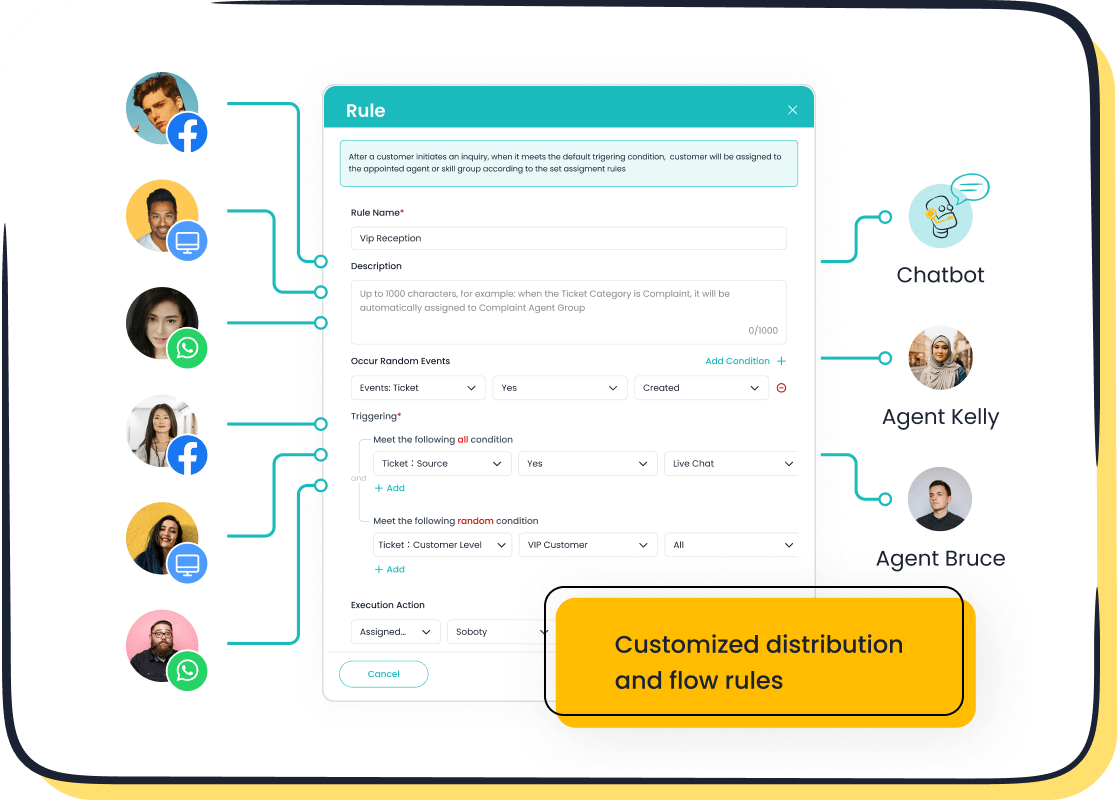
Sobot Live Chat: Unified and AI-Enhanced Communication
Sobot Live Chat offers a comprehensive solution for managing customer interactions. Its platform combines omnichannel communication, AI-powered tools, and built-in analytics to deliver exceptional customer support. You can use Sobot Live Chat to engage customers across websites, apps, and social media platforms like WhatsApp, Facebook, and Instagram.
One of Sobot’s standout features is its ability to unify all customer conversations in a single workspace. This ensures your team can provide timely and personalized responses without switching between platforms. The AI-assisted tools enhance efficiency by automating repetitive tasks and intelligently assigning inquiries to the right agents.
Sobot Live Chat also excels in improving conversion rates. By using precise profiling and tailored services, it helps you turn visitors into clients, resulting in a 38% gain in conversion. Additionally, its analytics capabilities evaluate over 150 indicators, enabling you to optimize your customer communication strategies.
Tip: Sobot Live Chat’s free trial allows you to explore its features and assess its impact on your business before committing.
Sobot’s commitment to innovation and customer-centricity makes it a reliable choice for businesses seeking the best customer communication management software. Its scalability and security features ensure smooth operations as your business grows.
Freshdesk: Simplified Customer Service
Freshdesk has become a go-to platform for businesses seeking straightforward and effective customer support. Its user-friendly interface and robust features make it an excellent choice for companies of all sizes. You can rely on Freshdesk to simplify your customer service processes and improve overall efficiency.
One of Freshdesk’s standout qualities is its ability to streamline ticket management. The platform organizes customer inquiries into a centralized system, making it easier for your team to track and resolve issues. This ensures faster response times and enhances customer satisfaction. Additionally, Freshdesk offers automation tools that handle repetitive tasks, allowing your team to focus on more complex problems.
Freshdesk’s reputation for excellence is reflected in its ratings across multiple review platforms:
| Platform | Rating | Number of Reviews |
|---|---|---|
| G2 | 4.4/5 | 3,500 |
| Software Advice | 4.5/5 | 3,300 |
| Capterra | 4.5/5 | N/A |
These ratings highlight Freshdesk’s reliability and effectiveness in delivering top-notch customer support. The platform’s intuitive design and powerful features make it a favorite among users.
Freshdesk also excels in scalability. Whether you’re a small business or a growing enterprise, the platform adapts to your needs. It offers flexible pricing plans and customizable options, ensuring you get the most value for your investment. By choosing Freshdesk, you can simplify your customer service operations and provide a seamless experience for your clients.
Tip: Take advantage of Freshdesk’s free trial to explore its features and see how it can benefit your business.
HubSpot Service Hub: All-in-One Customer Communications Software
HubSpot Service Hub stands out as a comprehensive solution for managing customer interactions. Its all-in-one approach combines customer support, ticketing, and analytics into a single platform. You can use HubSpot Service Hub to streamline your workflows and deliver exceptional service.
One of the platform’s key strengths is its integration capabilities. HubSpot Service Hub connects seamlessly with other HubSpot tools, creating a unified ecosystem for your business. This integration allows you to access customer data, track interactions, and manage campaigns from one place. It eliminates the need for multiple software solutions, saving you time and resources.
HubSpot Service Hub also prioritizes customer satisfaction. The platform includes features like live chat, knowledge bases, and customer feedback tools. These features enable you to engage with your clients effectively and address their concerns promptly. By using HubSpot Service Hub, you can build stronger relationships with your customers and foster loyalty.
Another advantage of HubSpot Service Hub is its focus on analytics. The platform provides detailed reports and insights into your customer service performance. You can use this data to identify areas for improvement and optimize your strategies. This ensures your team operates at peak efficiency and delivers the best possible experience for your clients.
Note: HubSpot Service Hub offers a free version with basic features, making it accessible for businesses just starting out. As your needs grow, you can upgrade to a paid plan for more advanced capabilities.
HubSpot Service Hub’s all-in-one design and powerful features make it a valuable tool for businesses looking to enhance their customer communication strategies. Its focus on integration, analytics, and customer satisfaction ensures you can meet your clients’ needs effectively.
Comparison Table of Client Communication Tools
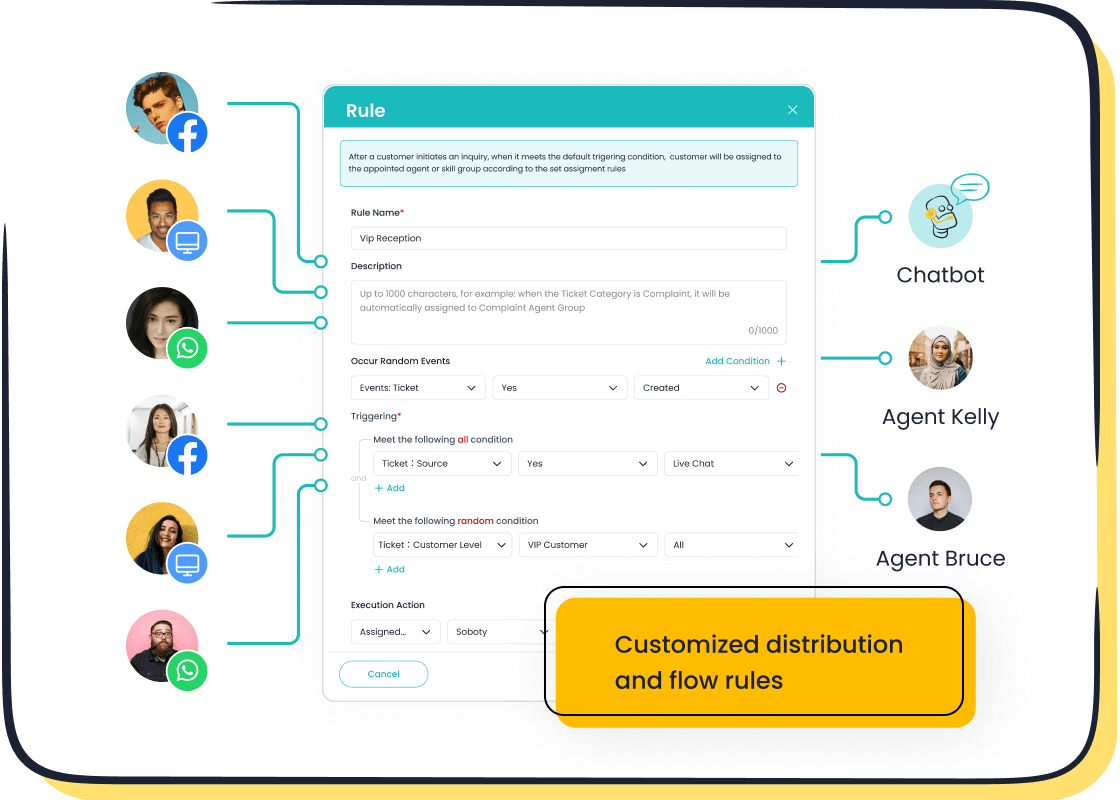
Feature-by-Feature Comparison
When comparing client communication tools, understanding their features is essential. A comprehensive comparison chart helps you evaluate which tool aligns with your business needs. Below is a table highlighting key features of cloud-based and on-premises systems:
| Feature | Cloud-Based Systems | On-Premises Systems |
|---|---|---|
| Cost | Generally cheaper due to no hardware costs | Higher due to hardware and setup expenses |
| Security | Enhanced with encryption and backups | Vulnerable to hardware failures |
| Scalability | Easily expandable with additional storage | Limited by physical storage capabilities |
Cloud-based systems often stand out for their scalability and cost-effectiveness. On-premises systems, while offering control, may struggle with flexibility. By analyzing these features, you can make informed decisions about your communication software.
Pricing and Subscription Models
Pricing plays a significant role in selecting the right tool. Different models cater to varying business needs. Here are the most common pricing structures:
- Subscription-based billing: Pay a fixed monthly or annual fee for access. This model suits businesses seeking predictable costs.
- Usage-based billing: Charges depend on actual usage, offering flexibility for businesses with fluctuating needs.
- Tiered pricing: Pricing varies based on user count, making it ideal for growing businesses.
- Telemetry-based pricing: Costs align with data usage, ensuring budget control and satisfaction.
Understanding these models helps you choose a tool that fits your budget while meeting your operational requirements.
User Ratings and Reviews
User ratings and reviews provide valuable insights into software reliability and satisfaction. Platforms like G2, Capterra, and Trustpilot aggregate feedback from real users, helping you assess each tool's performance. For example:
- G2 offers detailed reviews across various software categories, ensuring transparency.
- Capterra enables you to compare tools and read user experiences, building credibility.
- Trustpilot focuses on customer feedback, allowing you to gauge brand reliability.
These platforms simplify your decision-making process by highlighting strengths and weaknesses based on user experiences.
How to Choose the Right Client Communication Software
Identifying Your Business Needs
Choosing the right client communication software starts with understanding your unique requirements. Begin by assessing your organization’s communication needs. Identify the primary channels your customers use, such as email, live chat, or social media. Determine whether a single tool can meet your needs or if multiple specialized tools are necessary. Consider the size of your customer base and your growth projections to ensure the software can scale with your business.
Data-driven methods can help you refine your selection process. Look for patterns and trends in your customer interactions. Use analytics to prioritize tasks and set smarter strategies. For example, analyzing customer feedback can reveal areas where your communication processes need improvement. This approach ensures the software you choose aligns with your goals and enhances your overall performance.
Tip: Clearly define your goals, such as improving response times or increasing customer satisfaction, to guide your decision-making process.
Evaluating Scalability and Omnichannel Capabilities
Scalability and omnichannel capabilities are essential features for long-term success. As your business grows, your software must handle increased customer interactions without compromising performance. Omnichannel solutions allow you to provide consistent service across platforms, ensuring a seamless customer experience.
Statistics highlight the impact of these capabilities on business performance:
| Statistic Description | Value |
|---|---|
| Year-over-year customer retention rates | 91% greater for omnichannel |
| Lifetime value of omnichannel consumers | 30% higher |
| Year-over-year revenue increase | 9.5% for strong omnichannel |
| Year-over-year decrease in cost per contact | 7.5% for strong omnichannel |
| Customer expectation for consistent interactions | 90% of customers expect this |
Omnichannel customers also spend more, both online and in-store, compared to single-channel users. By investing in scalable and omnichannel software, you can improve customer retention, boost revenue, and reduce costs.
Leveraging Free Trials and Demos
Free trials and demos offer valuable opportunities to evaluate software before committing. Many businesses prefer trying products first to ensure they meet their needs. Studies show that 65% of users are more likely to make purchases after using free trials. This approach reduces buyer hesitation and increases conversions.
When exploring trials, focus on testing the software’s features and usability. Assess how well it integrates with your existing tools and whether it meets your operational requirements. For example, Sobot Live Chat offers a free trial, allowing you to experience its omnichannel capabilities and AI-powered tools firsthand. This hands-on experience helps you make informed decisions and ensures the software aligns with your business goals.
Note: Encourage your team to participate in the trial to gather diverse feedback and identify potential challenges early.
Considering Long-Term Costs and ROI
Evaluating long-term costs and ROI is essential when choosing client communication tools. You need to consider both the upfront investment and the ongoing expenses. These include software subscriptions, implementation fees, and training costs. However, the benefits often outweigh the costs when you select the right tool.
The formula for calculating ROI is straightforward: (Benefit of initiative – Cost of initiative) / Cost of initiative. This calculation helps you measure the financial returns from your investment. For example, tools with advanced features like AI-powered automation and omnichannel support can significantly improve customer satisfaction. Satisfied customers are more likely to stay loyal and spend more, boosting your revenue.
| Benefit Type | Description |
|---|---|
| Increased Revenue | Improved customer acquisition and increased customer spend. |
| Decreased Costs | Reduced customer churn and lower cost to serve. |
| Cost of Initiative | All expenses related to designing, implementing, and managing the tool. |
Poor customer experiences can be costly. Studies show that $3.7 trillion in global sales are at risk due to bad customer service. Additionally, half of customers reduce spending after a negative experience. Investing in tools that enhance customer interactions can help you avoid these losses. For instance, platforms that unify communication channels and provide real-time analytics enable your team to respond faster and more effectively.
When assessing ROI, focus on both tangible and intangible benefits. Tangible benefits include increased revenue and reduced operational costs. Intangible benefits, such as improved brand reputation and customer loyalty, also contribute to long-term success. By choosing tools with scalable and secure features, you ensure your investment supports your business growth.
Tip: Regularly review your tool’s performance metrics to ensure it continues to deliver value. Adjust your strategies based on these insights to maximize ROI.
The Future of Client Communication Software
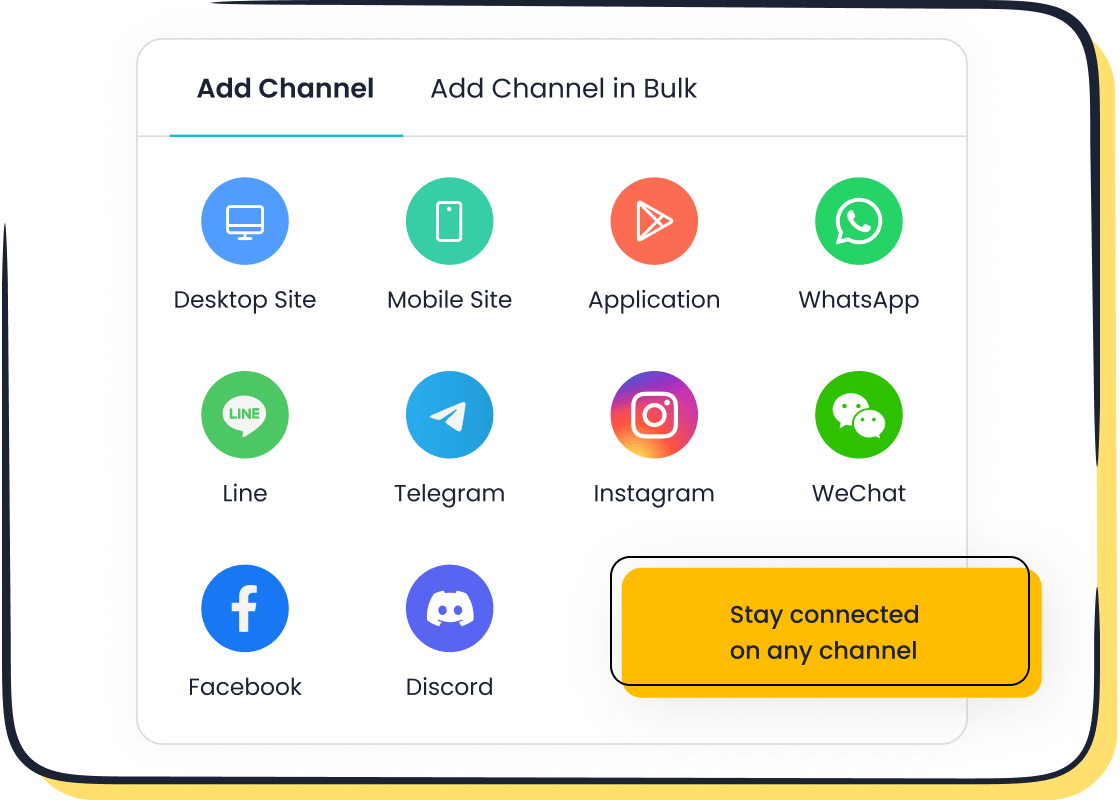
Emerging Trends in Customer Support Tools
Customer support tools are evolving rapidly, driven by advancements in technology and changing customer expectations. You can expect several trends to shape the future of these tools:
- AI innovations are enabling hyper-personalization, allowing businesses to deliver tailored messages based on unique customer data.
- Voice interaction technology is becoming more prominent. Tools like Siri and Alexa are enhancing how customers interact with businesses, especially during purchases.
- AI-powered customer service is now essential. It helps businesses meet the growing demand for quick responses and efficient resolutions.
- Proactive customer engagement is gaining importance. Companies are focusing on anticipating customer needs before they even arise.
These trends highlight the importance of adopting tools with advanced features that align with modern customer expectations. By staying ahead of these trends, you can ensure your business remains competitive and customer-focused.
The Role of AI and Automation in 2025
AI and automation are transforming client communication. They are not just tools but essential components of modern business strategies. The following table outlines key advancements expected in 2025:
| Sector | Expected Advancements in AI and Automation in Client Communications |
|---|---|
| Consumer Markets | Deployment of AI in marketing, customer service, and operational efficiencies. |
| Customer Service | Enhanced chatbots and AI agents to assist human staff and automate interactions. |
| Dynamic Pricing | AI-driven pricing strategies to adapt to market changes and competition. |
| Product Design | AI-enhanced design processes, though many companies lack the necessary skills. |
These advancements show how AI is reshaping industries. For example, chatbots are becoming smarter, handling complex queries while freeing up human agents for critical tasks. AI-driven pricing strategies also allow businesses to stay competitive by adapting to market changes in real time. By leveraging these technologies, you can improve efficiency and deliver better customer experiences.
How Sobot is Shaping the Future of Communication Software
Sobot is at the forefront of innovation in client communication software. Its solutions combine cutting-edge features like AI-powered tools, omnichannel support, and built-in analytics. These capabilities help businesses provide seamless and personalized customer experiences.
For instance, Sobot Live Chat unifies all customer interactions into a single workspace. This ensures your team can respond quickly and effectively. The platform’s AI tools automate repetitive tasks, allowing agents to focus on complex issues. Additionally, Sobot’s analytics evaluate over 150 indicators, helping you optimize your communication strategies.
Sobot’s commitment to innovation doesn’t stop there. As an official WhatsApp Business Solution Provider, it offers advanced tools for customer engagement. These tools enhance communication efficiency and improve customer satisfaction. By choosing Sobot, you can stay ahead of industry trends and deliver exceptional service.
Choosing the right client communication tool can transform your business. Each platform offers unique strengths, from Zendesk’s robust ticketing system to Sobot Live Chat’s AI-enhanced omnichannel support. Aligning these tools with your goals ensures better customer satisfaction and operational efficiency.
Tip: Start with free trials to explore features firsthand. Sobot Live Chat, with its unified workspace and analytics, is an excellent choice to elevate your customer interactions. Visit Sobot Live Chat today and experience the difference!
FAQ
What is the most important feature to look for in client communication software?
Focus on omnichannel support. It ensures seamless communication across platforms like email, live chat, and social media. This feature helps you provide consistent service and improves customer satisfaction.
Tip: Choose software that integrates all channels into one workspace for better efficiency.
How can AI-powered tools improve customer communication?
AI tools automate repetitive tasks, like answering FAQs or routing inquiries. They also provide instant responses, reducing wait times. This allows your team to focus on complex issues, improving overall efficiency and customer satisfaction.
Is scalability important when choosing communication software?
Yes, scalability ensures your software grows with your business. It helps you handle increased customer interactions without disruptions. Scalable tools also adapt to new team members or higher workloads, making them essential for long-term success.
How do free trials help in selecting the right tool?
Free trials let you test features and usability before committing. They help you evaluate how well the software integrates with your existing tools. This hands-on experience ensures the tool aligns with your business needs.
Note: Always involve your team during trials to gather diverse feedback.
Why is security critical in client communication tools?
Security protects sensitive customer data from breaches. Features like encryption and multi-factor authentication build trust and ensure compliance with regulations. Secure tools safeguard your business reputation and prevent costly data breaches.
Statistic: Cybercrime costs are projected to reach $10.5 trillion by 2025.
See Also
Best Chat Applications for Businesses in 2024
Leading Customer Feedback Tools for 2024
Best Cloud Contact Center Solutions for 2024
